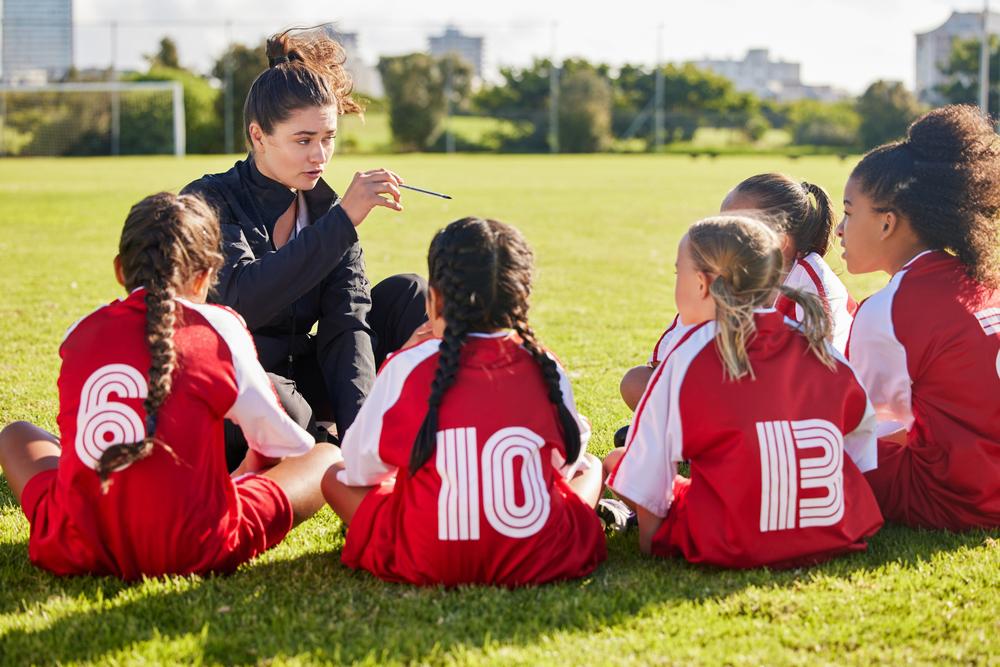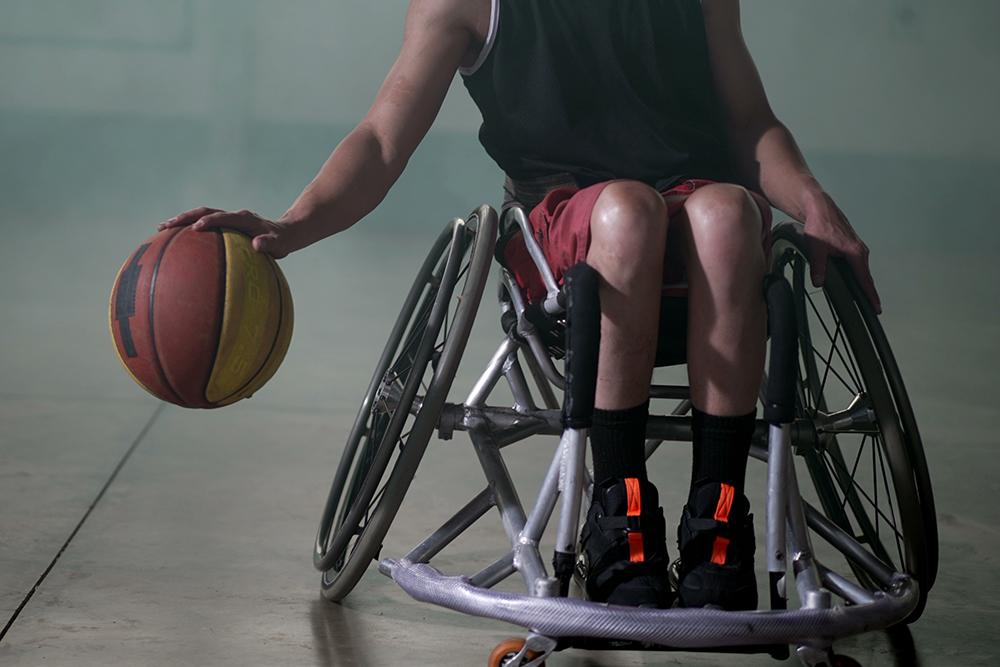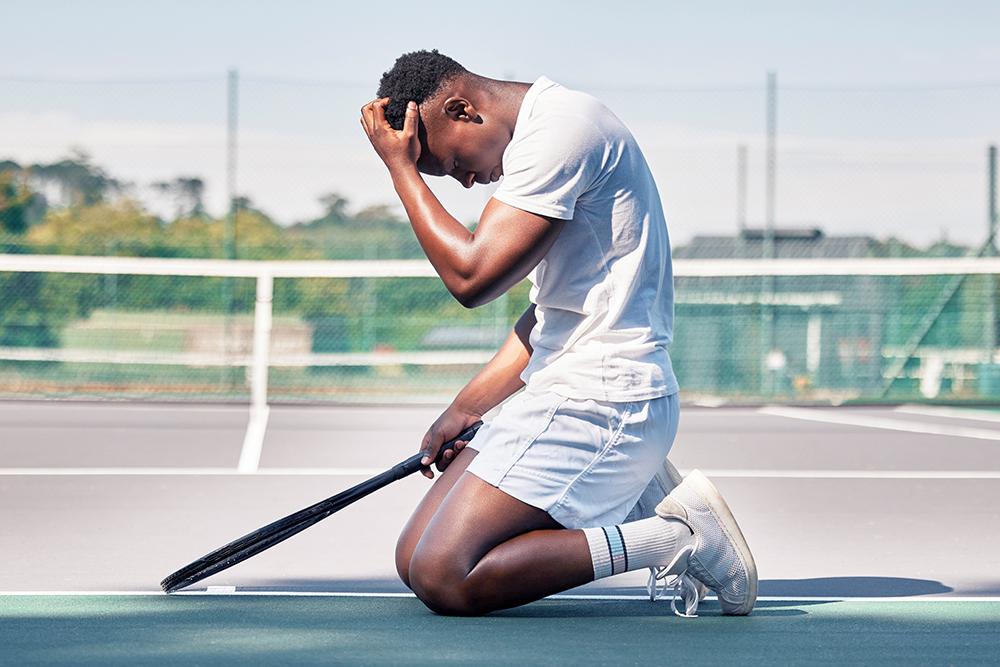 Setting boundaries as a student-athlete may seem impossible given that you’re obligated to turn in that history report on the same day as playoffs while also juggling family commitments and college applications.
Setting boundaries as a student-athlete may seem impossible given that you’re obligated to turn in that history report on the same day as playoffs while also juggling family commitments and college applications.
Setting boundaries is tricky because you have so many projects, obligations, and goals that you’re trying to balance. But it is doable.
Here, board-certified family physician and TrueSport Expert Deborah Gilboa, MD, is sharing a few simple ways to get better at setting boundaries that will actually stick and that will let you go after all of your big goals, just not all at the same time.
1. Understand the hard part about boundary setting
The idea of setting boundaries is difficult when you’re a student-athlete. Homework is due on certain days, practice and game times are set in stone, and yes, you could skip your friend’s birthday party so you have time to work on that report but your friendship may suffer as a result. So, how do you set boundaries when you don’t really have choices?
Gilboa agrees that this can be a huge challenge for athletes who don’t have a lot of control over their own schedules or workloads. Boundary setting, she says, is more about setting intentions and assessing your priorities, and then making the best decisions you can based on that information.
2. Boundary-setting isn’t simply about ‘saying no’ to things
“The biggest mistake we make about boundaries is assuming that setting a boundary means just saying no,” Gilboa says. “That’s too simplistic. That’s because saying yes to something is usually creating a no somewhere else. Every time you say yes to another team, another coaching session, another opportunity you’re trying out for, you’re saying no to video games or spending time with your friends or doing homework. Every time you say yes to something, you are saying no to something else. So, setting boundaries is not the skill of saying no. Setting boundaries involves two skills: The first is figuring out what your priorities are, and the second is aligning your choices to your priorities.”
3. Start by defining your priorities
In order to set a boundary, you need to know what your top priorities are. Often, when coaches or experts talk about priorities, they suggest that you should only have one priority. But for a student-athlete, this is unrealistic, says Gilboa. “While you’re at practice, your sport feels like it should be your top priority. But when you’re in your AP science class, that feels like it has to be the most important,” she says. “You can’t really choose one single priority. But you do need to get really honest with yourself about the short list of stuff that matters the most to you and ideally end up with around five top priorities. That list can include things like your sport, your family, your overall grades, your work on the school newspaper, and your friendships. And finally, your overall health should always be on your priority list, because if you aren’t prioritizing staying healthy, you won’t be able to hit any of your goals.”
4. Create your leaderboard
While your core priorities will always be in play, at certain points, you’ll need to focus on one more than the others. “You’ve got a starting set of priorities, and you’ll want to move those up and down the leaderboard depending on what season you’re in,” explains Gilboa. “Then, your decisions, your choices, and your actions should align with that list.”
5. Set the simple boundaries that you can maintain
 While student-athletes can’t always change things like when reports are due or how the season is scheduled, you aren’t entirely without things you can control in your life. Gilboa suggests simple tweaks like setting hours where your phone is in Do Not Disturb mode (or leaving it in the living room when you go to bed) so that your friends and teammates won’t keep you up at night. You can also create simple routines like a specific breakfast that you eat every single morning to streamline how quickly you can get ready for early practice while still ensuring that you’re fueled for the work you’re doing. You may not be able to change the fact that practice starts at 7 a.m., but you can change how good you feel while you’re there.
While student-athletes can’t always change things like when reports are due or how the season is scheduled, you aren’t entirely without things you can control in your life. Gilboa suggests simple tweaks like setting hours where your phone is in Do Not Disturb mode (or leaving it in the living room when you go to bed) so that your friends and teammates won’t keep you up at night. You can also create simple routines like a specific breakfast that you eat every single morning to streamline how quickly you can get ready for early practice while still ensuring that you’re fueled for the work you’re doing. You may not be able to change the fact that practice starts at 7 a.m., but you can change how good you feel while you’re there.
6. Build credibility when you can
Boundaries are easier to set when your coaches, family, and teachers understand that you’re coming from a place of integrity. “Athletes can get creative during their off season when sport priority shifts further down the leaderboard,” says Gilboa. “When you’re not attending daily practice or missing classes to go to competitions, this is a great chance to get ahead in classes and build credibility with teachers by banking extra credit and letting them know that you’re committed to getting good grades. That way, when you do need to leave class early on game days, your teachers know that you’re serious about your academics and want to help you juggle those priorities.”
7. Learn how to ask for what you need
In line with building credibility with teachers, you can also ask teachers for what you need in order to achieve your priority of academic success, says Gilboa. “You have to ask for help. In anticipation of knowing you’ll miss a bunch of classes, do things like going to your own parent-teacher conference to explain your situation, then ask the teacher to work with you to make sure that you don’t fall behind. Often, they’re happy to help when they know that you care enough to ask.” The same is true for things like friendships: Your friends may not realize how busy you are, so explaining to them that you’re not readily available during your competitive season lets them know that you still care about the friendship—and helps them know how to best support you.
8. Know that your boundaries will shift continually
Boundaries are a moving target. “We tend to think of boundaries as something that’s permanent and definitive, but your boundaries will shift depending on what else is going on in your life,” says Gilboa. “Resilience is our ability to navigate change and when the playing field shifts, which happens every day in life, we have to be able to identify where the boundaries are on the new playing field.”
9. Do regular check-ins and reassessments
In order to know when those boundaries are about to shift, it can be helpful to revisit your priority leaderboard regularly, making sure that the top priorities still make sense for you, while also considering if there are firmer boundaries you need to set, hard conversations you need to have, or a request for help that you need to make.
_______________________
Takeaway
Setting boundaries as a student-athlete is a constant, evolving process. Your boundaries will change throughout the year, and even throughout the month. But the more you can identify your top priorities ahead of time, the easier it is to stick to your boundaries and achieve your goals.



